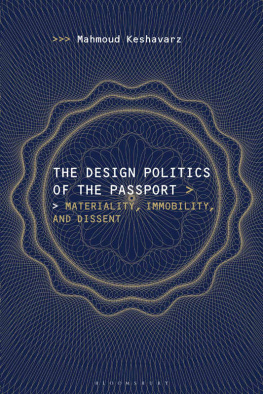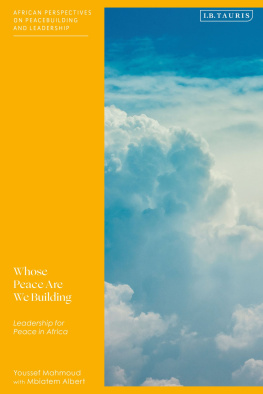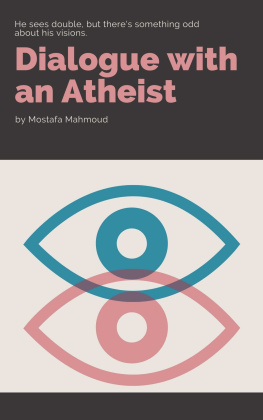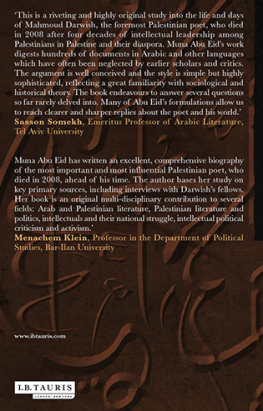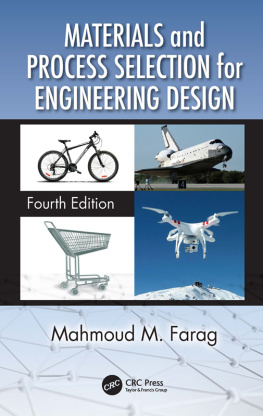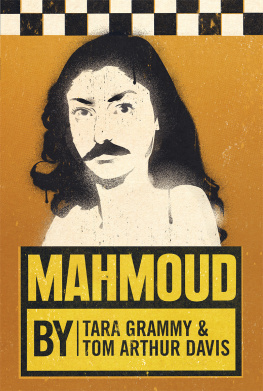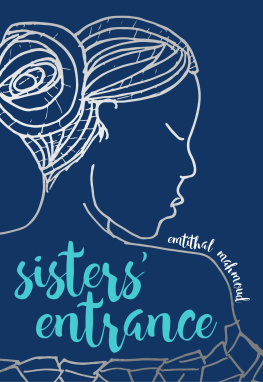Mahmoud Keshavarz - The Design Politics of the Passport
Here you can read online Mahmoud Keshavarz - The Design Politics of the Passport full text of the book (entire story) in english for free. Download pdf and epub, get meaning, cover and reviews about this ebook. year: 2018, publisher: Bloomsbury Publishing, genre: Politics. Description of the work, (preface) as well as reviews are available. Best literature library LitArk.com created for fans of good reading and offers a wide selection of genres:
Romance novel
Science fiction
Adventure
Detective
Science
History
Home and family
Prose
Art
Politics
Computer
Non-fiction
Religion
Business
Children
Humor
Choose a favorite category and find really read worthwhile books. Enjoy immersion in the world of imagination, feel the emotions of the characters or learn something new for yourself, make an fascinating discovery.
- Book:The Design Politics of the Passport
- Author:
- Publisher:Bloomsbury Publishing
- Genre:
- Year:2018
- Rating:4 / 5
- Favourites:Add to favourites
- Your mark:
- 80
- 1
- 2
- 3
- 4
- 5
The Design Politics of the Passport: summary, description and annotation
We offer to read an annotation, description, summary or preface (depends on what the author of the book "The Design Politics of the Passport" wrote himself). If you haven't found the necessary information about the book — write in the comments, we will try to find it.
The Design Politics of the Passport — read online for free the complete book (whole text) full work
Below is the text of the book, divided by pages. System saving the place of the last page read, allows you to conveniently read the book "The Design Politics of the Passport" online for free, without having to search again every time where you left off. Put a bookmark, and you can go to the page where you finished reading at any time.
Font size:
Interval:
Bookmark:

The Design Politics of the Passport
The Design Politics of the Passport
Materiality, Immobility, and Dissent
Mahmoud Keshavarz

All the birds that followed my palm
To the door of the distant airport
All the wheatfields
All the prisons
All the white tombstones
All the barbed boundaries
All the waving handkerchiefs
All the eyes
were with me,
But they dropped them from my passport
Mahmoud Darwish
CONTENTS
I am deeply grateful to those who shared their stories, histories, and struggles of border crossings and transgressing with me during these years: undocumented migrants, asylum seekers, forgers, and migration brokers. I am indebted to the companionship of Shahram Khosravi, a friend, teacher, colleague, and brilliant scholar. Without Shahram and his inspiring work, I would have not started this project in the first place. I am grateful to those who I met during my time as a PhD candidate at Malm University, which eventually led to this book; to Eric Snodgrass, Maria Hellstrm Reimer, Susan Kozel, Christina Zetterlund, Ramia Maz, Erling Bjrgvinsson, Jacek Smolicki, Anna Lundberg, Berndt Clavier, sa Sthl, Kristina Lindstrm, Temi Odumousou, Carina Listerborn, Johan Redstrm, William Walters, Mathilda Tham, Christine M. Jacobsen, Oscar Hemer, and Andrew Morrison. Thank you all for your insightful comments, engagements with the work, and sharp criticism. Thanks to Parsons School of Design, the New School, which hosted me in spring 2014. The idea of turning my messy notes and unfinished lines of thought to a book on passport came to mind while being there. Victoria Hattam, Miriam Ticktin, and most importantly Clive Dilnot were crucial in this sense. I am grateful to Rebecca Barden at Bloomsbury who believed in this project and convinced me to publish this book; to the Department of Design at Linnaeus University and particularly Ola Sthl; to the School of Design and Craft (HDK), University of Gothenburg, and particularly Erling Bjrgvinsson. Both spaces provided me with a short but important and much needed time for working on this manuscript. The final stages on working with this book were the beginning of my work at the Engaging Vulnerability Research Program at Uppsala University. I would like to thank all the members of the program and particularly Don Kulick, Mats Hyvnen, Sverker Finnstrm, Maria Karlsson, Sharon Rider, Erik Hallstensson, and Karl Ekeman for their critical comments on the final manuscript of this book. Thanks to all the members of Decolonizing Design for your struggles, laughter, frustrations, as well as our inspiring and challenging collective project: Luiza Prado, Pedro Oliveira, Ece Canl, Danah Abdulla, Ahmed Ansari, Matt Kiem, and Tristan Schultz. My deepest gratitude goes to my lifelong friend Amin Parsa for never-ending cups of tea and discussion over this project and many others no matter how far, how close. My family in Iran has always been a source of joy, support, and learning. I thank you all. To Sofi, my lifetime comrade and Levi who does not have a passport yet: without you, your love, and courage, not only the presence of this book would be in question but the life in itself would be worthless.
Portions of this book appeared previously in two articles published in Design Philosophy Papers 2015, Vol. 13 (2) and 2016, Vol. 14 (12) and a chapter in Tricky Design: Ethics of Things. These portions are reproduced here with the permission of Taylor and Francis as well as Bloomsbury.
The freedom of movement [] is not the end purpose of politics, that is, something that can be achieved by political means. It is rather the substance and meaning of all things political.
Hannah Arendt
It was autumn 2012. A gloomy afternoon approached as the clouds loomed over the sky of Malm, a city located in south of Sweden. I was sitting in the kitchen of my apartment listening to Nemat, a young, calm, slim boy from Afghanistan. I had known him for six months by this point. His family had fled the war in Afghanistan in the 1980s and had migrated to Iran. He was born and raised there and resided in Tehran legally until he was six years old. Then the authorities refused to prolong their permit. The family had to stay in Tehran undocumented, since going back to Afghanistan in 2002 was not an option. The country was just occupied by US forces. The consequences of being undocumented meant living in constant fear of deportation and thus being subject to exploitation at work, school, and in everyday encounters in Iranian society. When Nemat was 12 he had to begin workingin sectors including construction, tailoring, and household production workshopsto help the family bear the high costs of an undocumented life. When he was 15 the family decided to go back to Afghanistan as their situation in Iran was becoming worse. However, things did not work in their hometown of Ghazni as they had imagined. Afghanistan, a playground for different Western military forces since the 1970s, was too dangerous to live a life. After a few months, they decided to go back to Iran. They did not have a passport or a visa and, even if they had wanted to get one, it was an impossible task. The family had to travel separately as crossing altogether would have hindered their chances of crossing. Nemat crossed the border to Pakistan first with the help of smugglers and from there he hid in a Nissan pickup truck to cross the border to Iran, where he faced shooting from the Iranian border guards who, together with the international community, consider that specific border as a battlefield for the war on drug trafficking. Back in Tehran and reunited with his family within a few months, Nemat decided to leave Iran for Europe as he had no place, neither in Afghanistan nor Iran. The main problem, however was acquiring a proper passport, or a right passport as he put it. Without one, Nemat had no place in the world. He was not given a passport at birth and his possibilities to obtain one was incredibly limiteddespite the fact that he worked twelve hours per day; that he and his family contributed to the Iranian economy through their devaluated labor, and that they refused to engage in any war in their home country. Why did you not get an Afghan passport? I asked him. What would I do with that? There is no use in it! Nemat decided to take the matter into his own hands and obtain a passport that could guarantee him a place in the world, a place to live, to make, to dream. That was when his long journey of border transgressing outside of Iran started.
During the last seven years, I have listened to the stories of many undocumented migrants and border transgressors who have had different experiences of how the lack of a passport, not having a good passport, carrying a forged passport, or waiting to be granted a proper passport have shaped their conditions and their options of mobility and residence. Mundane, instrumental, and sometimes not even at stake for the privileged population of the world, namely, white middle-class citizens of the Global North, a passport tends to be directly embedded in the lives of the majority of the worlds population: most prominently in the lived experiences of stateless refugees, undocumented migrants, and border transgressors, as well as working-class citizens of the Global South. To turn the passport into an object of thought stems from these non-privileged lived experiences.
In this book, I explore how the ability to move across territories is historically and contemporarily designed and commodified by following the emergence, development, and escalating uses of passports. By highlighting how the passport designs the conditions of being, moving, and residing in the world beyond the actual design of the passport, I aim to weave together stories of how mobilities, and more importantly immobilities, are organized through specific designed objects. Moreover, I intend to trace how mobilities are distributed unevenly and asymmetrically across various spaces by intentional as well as contingent actions and decisions.
Next pageFont size:
Interval:
Bookmark:
Similar books «The Design Politics of the Passport»
Look at similar books to The Design Politics of the Passport. We have selected literature similar in name and meaning in the hope of providing readers with more options to find new, interesting, not yet read works.
Discussion, reviews of the book The Design Politics of the Passport and just readers' own opinions. Leave your comments, write what you think about the work, its meaning or the main characters. Specify what exactly you liked and what you didn't like, and why you think so.

